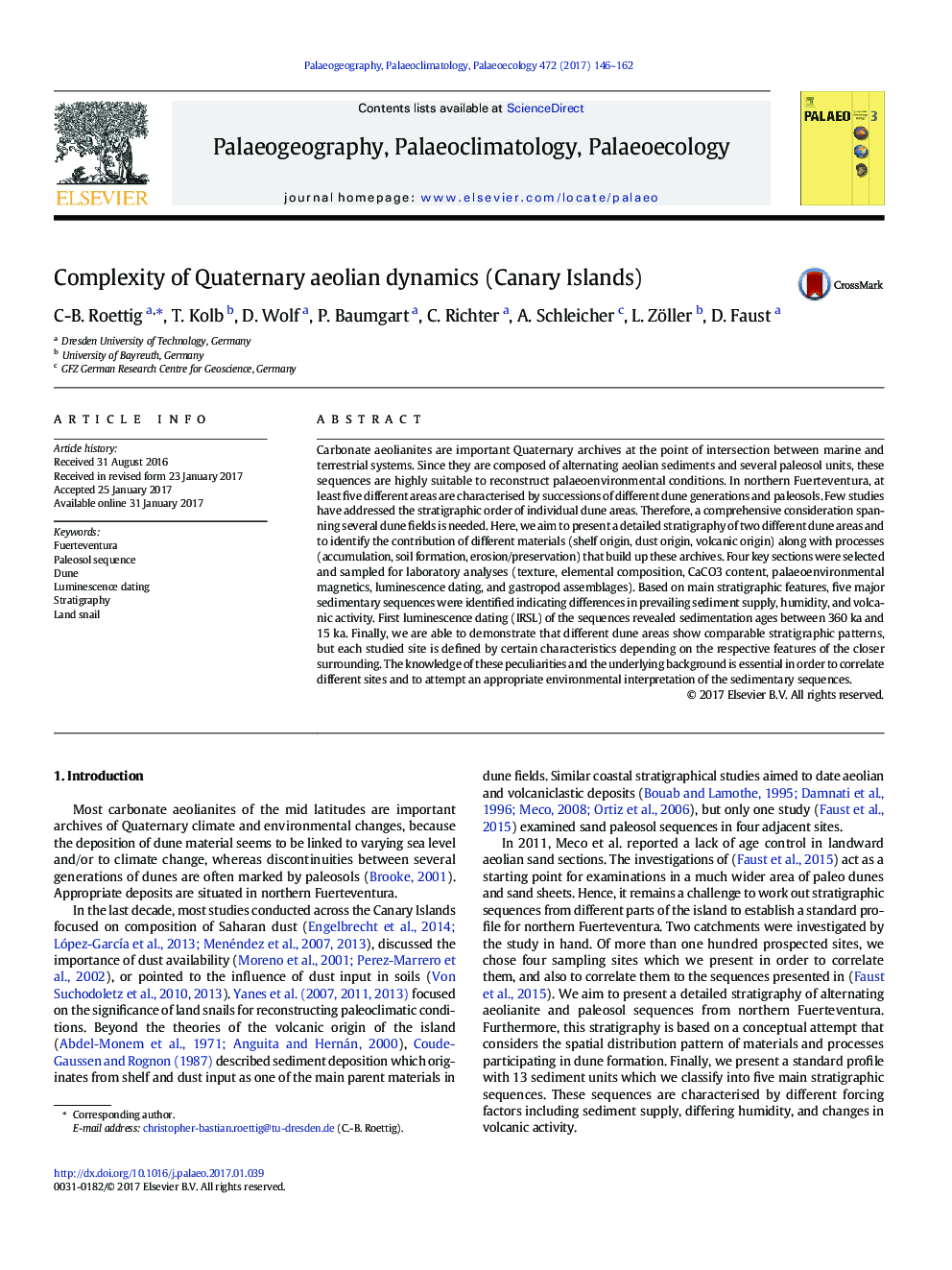| Article ID | Journal | Published Year | Pages | File Type |
|---|---|---|---|---|
| 5755868 | Palaeogeography, Palaeoclimatology, Palaeoecology | 2017 | 17 Pages |
Abstract
Carbonate aeolianites are important Quaternary archives at the point of intersection between marine and terrestrial systems. Since they are composed of alternating aeolian sediments and several paleosol units, these sequences are highly suitable to reconstruct palaeoenvironmental conditions. In northern Fuerteventura, at least five different areas are characterised by successions of different dune generations and paleosols. Few studies have addressed the stratigraphic order of individual dune areas. Therefore, a comprehensive consideration spanning several dune fields is needed. Here, we aim to present a detailed stratigraphy of two different dune areas and to identify the contribution of different materials (shelf origin, dust origin, volcanic origin) along with processes (accumulation, soil formation, erosion/preservation) that build up these archives. Four key sections were selected and sampled for laboratory analyses (texture, elemental composition, CaCO3 content, palaeoenvironmental magnetics, luminescence dating, and gastropod assemblages). Based on main stratigraphic features, five major sedimentary sequences were identified indicating differences in prevailing sediment supply, humidity, and volcanic activity. First luminescence dating (IRSL) of the sequences revealed sedimentation ages between 360Â ka and 15Â ka. Finally, we are able to demonstrate that different dune areas show comparable stratigraphic patterns, but each studied site is defined by certain characteristics depending on the respective features of the closer surrounding. The knowledge of these peculiarities and the underlying background is essential in order to correlate different sites and to attempt an appropriate environmental interpretation of the sedimentary sequences.
Related Topics
Physical Sciences and Engineering
Earth and Planetary Sciences
Earth-Surface Processes
Authors
C-B. Roettig, T. Kolb, D. Wolf, P. Baumgart, C. Richter, A. Schleicher, L. Zöller, D. Faust,
